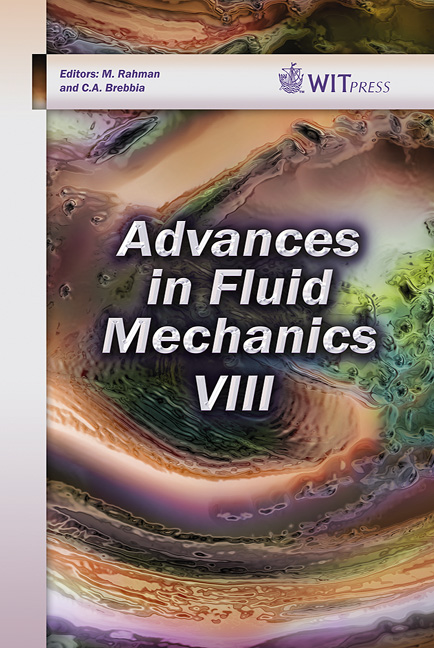Implementation Of An LES Mixed Subgrid Model For The Numerical Investigation Of Flow Around A Circular Cylinder At Re = 3,900 And 140,000
Price
Free (open access)
Transaction
Volume
69
Pages
12
Page Range
79 - 90
Published
2010
Size
3,475 kb
Paper DOI
10.2495/AFM100071
Copyright
WIT Press
Author(s)
J. Wong & E. Png
Abstract
Flows around ships, autonomous underwater vehicles, and other marine structures are often complicated and highly three-dimensional. For accurate flow prediction, large eddy simulation (LES) is a promising alternative which is more accurate than Reynolds-averaged (RANS) turbulence modelling and computationally less intensive than direct numerical simulation (DNS). The flow over a cylinder at Re = 3900 and Re = 140,000 is investigated using the commercial Ansys-Fluent CFD solver and the performance of two different LES subgrid models is evaluated. In particular, we have incorporated the scale similarity term of Bardina into the conventional Smagorinsky model using User- Defined Functions, to form what is known as a Mixed subgrid model. The Mixed subgrid model gives the best agreement with measurements, especially for higher Reynolds numbers where the grid is correspondingly coarser with respect to the flow. This has important implications for the LES modelling of marine engineering applications, where the Reynolds numbers involved are typically extremely large and fine meshes are computationally expensive. Keywords: large eddy simulation, cylinder, mixed subgrid model, scale similarity, smagorinsky, FLUENT, user-defined functions. 1 Introduction Flows around ships, autonomous underwater vehicles, and other marine structures are often complicated and highly three-dimensional. The traditional approaches of using facility testing to measure the performance of marine vessels
Keywords
large eddy simulation, cylinder, mixed subgrid model, scale similarity, smagorinsky, FLUENT, user-defined functions





